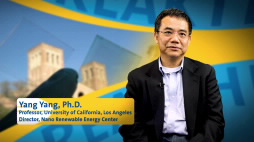FOR IMMEDIATE RELEASE | November 20, 2012
New American Chemical Society video series shines a light on transparent solar cells
WASHINGTON, Nov. 20, 2012 — The American Chemical Society (ACS) today launched a new video series that highlights headline-making research from the society’s suite of more than 40 peer-reviewed scientific journals. The first episode of Breakthrough Science focuses on research reported in one of those journals, ACS Nano. It involved development of new transparent solar cells, an advance toward giving windows in homes and other buildings the ability to generate electricity while still allowing people to see outside.
The video is available at http://pubs.acs.org/page/videos/breakthroughscience.html.
Media Contact
Michael Bernstein
202-872-6042
m_bernstein@acs.org
Michael Woods
202-872-6293
m_woods@acs.org
Breakthrough Science features newsworthy research with the potential to improve everyday life. The series includes interviews with scientists from a range of fields, complemented by engaging graphics and animation. New episodes will be released on a regular basis.
In the video, Yang Yang, Ph.D., of the University of California, Los Angeles, explains the development of a new kind of solar cell that produces energy by absorbing mainly infrared light, not visible light, making the cells 66 percent transparent. These so-called polymer solar cells are lightweight and flexible and can be produced in high volume at low cost.
Yang and co-author Paul S. Weiss, Ph.D., a UCLA professor who also is editor-in-chief of ACS Nano, explain how they made the device from a photoactive plastic that converts infrared light into an electrical current. They predict that the technology could be used on buildings within a few years.
Yang and Weiss are also the focus of the film Catching the Invisible Light, a semifinalist in the Focus Forward Filmmaker Competition. Finalists will be shown at the Sundance Film Festival, and the top award will receive a $100,000 Grand Prize.
To automatically receive news releases from the American Chemical Society contact newsroom@acs.org.
###

series.

